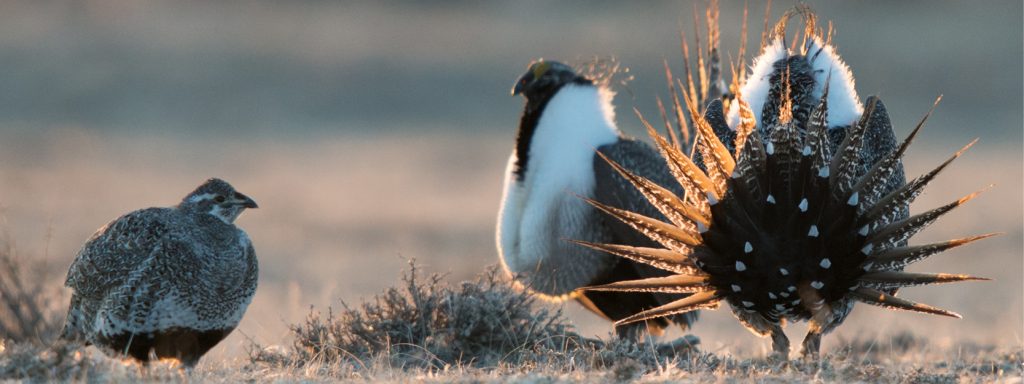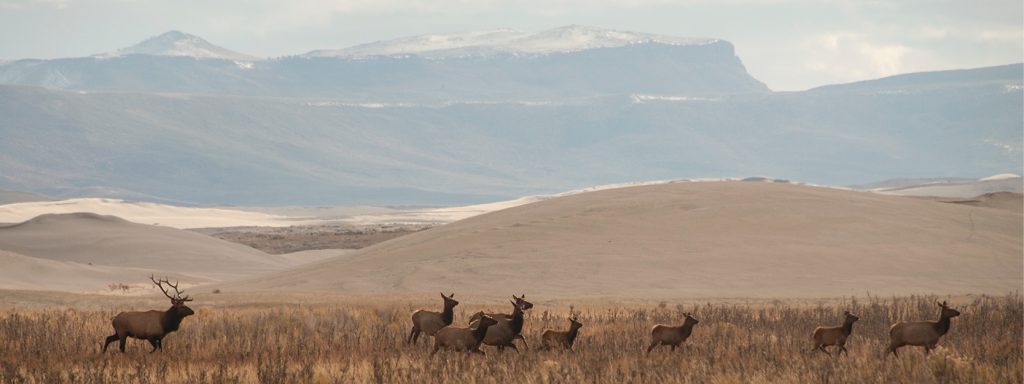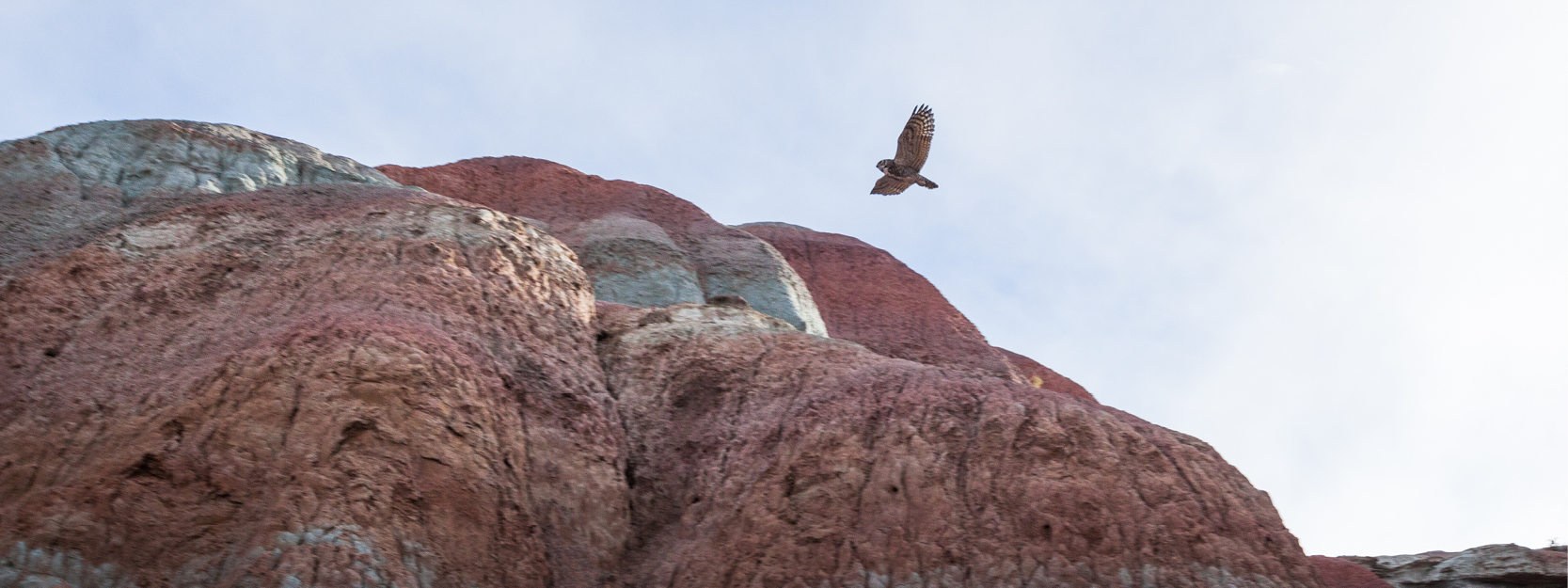IMAGINE THIS: It’s spring in Wyoming’s Red Desert, and daybreak unfolds around you. As the sun crests the horizon and illuminates mile upon mile of open sagebrush country, the songbirds’ dawn chorus reaches its crescendo. Sage thrashers and Brewer’s sparrows sing their hearts out. At intervals, the resonant “wups” of displaying Greater sage-grouse join in. Far in the distance, bands of mule deer amble along a well-worn game trail, browsing their way towards summer pasture as the snows recede. A pair of ferruginous hawks wheel overhead in the brightening sky.

Image: ©Scott Copeland Images
It’s a scene that has played out largely unchanged for millenia. Whether today, 100 years ago, or 10,000 years ago, people have experienced the vastness and natural bounty of the Red Desert. These days, as wildlife and the lands they rely on are increasingly whittled into the margins, fewer and fewer places on Earth can offer the same. The Red Desert’s immense territory of sagebrush is a precious thing, supporting groups of species you can’t find many places in North America anymore. It is worth our time and toil to keep it whole and healthy for those who come after us.
Thankfully, we have a brief opportunity to make a big impact. With the revision of the Rock Springs Resource Management Plan by the Bureau of Land Management, the managers who oversee land use in the Red Desert are reassessing everything. The agency will carefully weigh public comments as it decides how best to manage these lands for decades to come. If we want to uphold the Red Desert’s extraordinary wildlife legacy, now is the time to speak up in favor of management directives that will help conserve the area’s exceptional natural resources.

Image: Ken Driese
The BLM is choosing between management actions that will make a real difference to the wildlife that depend on these lands for their survival. Whether you want to see the world’s longest mule deer migration persist, provide desert elk with safe birthing grounds, ensure better nest success for hawks and eagles, or see the most densely populated Greater sage-grouse habitat on the planet protected, your input during this process is critical. With foresight and careful management, generations of people and animals yet to come will be able to experience the Red Desert much the same as those who came before. The opportunity to make that careful, balanced management a reality is here — and it is up to us to speak to the values we hold dear on this landscape.
The Bureau of Land Management is accepting public comment on the Rock Springs draft Resource Management Plan through January 17. To make a comment, visit our Red Desert action page. To learn more about provisions in the plan relating to wildlife, don’t hesitate to reach out to me via email.

